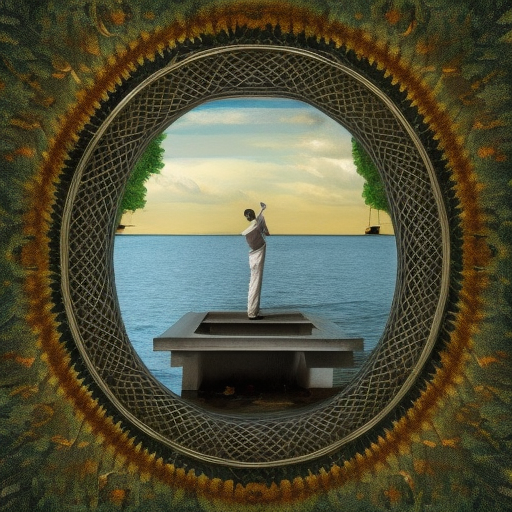Trompe-l’œil: A Detailed Summary
Trompe-l’œil, a French term meaning “deceive the eye,” is a technique in art that creates an optical illusion, making two-dimensional works appear three-dimensional. This artistic style has been used throughout history, dating back to ancient Greece and Rome, and has continued to evolve and captivate audiences to this day.
History and Origins
The origins of trompe-l’œil can be traced back to ancient times, where it was used in frescoes and murals to create the illusion of depth and realism. The technique gained popularity during the Renaissance, with artists like Andrea Mantegna and Leonardo da Vinci incorporating it into their works. However, it was during the Baroque period that trompe-l’œil truly flourished, with artists such as Gian Lorenzo Bernini and Pietro da Cortona pushing the boundaries of the technique.
Techniques and Execution
Trompe-l’œil is achieved through meticulous attention to detail and the skillful use of perspective. Artists employ various techniques, such as shading, foreshortening, and precise rendering, to create the illusion of depth and three-dimensionality. By carefully manipulating light and shadow, artists can make objects appear to protrude from the canvas or recede into the background.
Subjects and Themes
Trompe-l’œil can depict a wide range of subjects and themes. Common motifs include architectural elements, such as columns, arches, and windows, as well as still life compositions featuring everyday objects like books, fruit, and flowers. The goal is to create a sense of realism that tricks the viewer into believing they are looking at a tangible object rather than a painted representation.
Modern Applications
While trompe-l’œil has its roots in classical art, it continues to be a popular technique in contemporary art. Many artists today use the technique to challenge perceptions and play with the viewer’s sense of reality. Some artists incorporate trompe-l’œil into street art, creating murals that interact with their surroundings and appear to defy the laws of physics. Others use the technique in sculpture, creating hyper-realistic pieces that appear to be made of everyday materials like wood or metal.
Notable Artists
Throughout history, numerous artists have made significant contributions to the world of trompe-l’œil. One notable artist is William Harnett, an American painter known for his still life compositions that often included objects like currency, musical instruments, and books. Harnett’s attention to detail and meticulous rendering made his works highly sought after.
Another notable artist is Salvador Dalí, a Spanish surrealist known for his eccentric and dreamlike paintings. Dalí often incorporated trompe-l’œil elements into his works, creating optical illusions that challenged the viewer’s perception of reality.
Impact and Influence
Trompe-l’œil has had a lasting impact on the art world, inspiring and influencing artists across different periods and styles. The technique’s ability to create a sense of realism and engage the viewer’s imagination continues to captivate audiences. Trompe-l’œil has also influenced other art forms, such as interior design and set decoration, where the technique is used to create visually stunning and immersive environments.
In conclusion, trompe-l’œil is a fascinating artistic technique that creates optical illusions, deceiving the viewer’s eye and making two-dimensional works appear three-dimensional. With its origins in ancient times and its continued popularity in contemporary art, trompe-l’œil showcases the skill and creativity of artists who strive to challenge perceptions and create captivating visual experiences.












